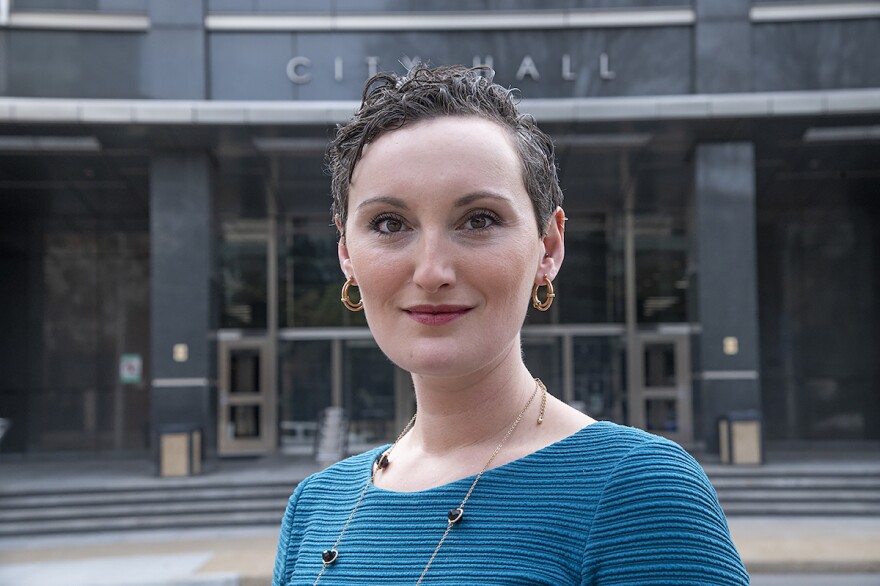When Richmond residents head to the polls next week, they’ll decide whether to approve a casino in Southside. After a similar pitch failed in 2021, city officials are focusing on a projected $30 million in annual tax revenue — $19 million of which they say will be invested into child care initiatives.
Currently, child care is funded through a complex patchwork of federal and state programs. The funding sources differ depending on the program, and eligibility varies depending on a family’s income.
Richmond Public Schools and some other providers receive federal funding to provide free care to children from birth to age five through the federal Head Start program. For a family of four, the maximum income to qualify is $30,000. To apply, families contact the Head Start program provider for information about how to apply.
Virginia also sends funding to schools and community-based organizations to provide preschool to at-risk four year olds unserved by Head Start through what’s called the Virginia Preschool Initiative. And the state helps fund care at certain private child care centers through the Mixed Delivery Program. Depending on income, families can receive free care through this program.
The Child Care Subsidy Program works a bit differently, with mostly federal dollars going directly to families. Families apply through the Department of Social Services or CommonHelp. They then pay for care by swiping a card every day their child attends a child care center; providers receive funding based on student attendance not enrollment. Depending on family income, parents may have to pay for part of this care.
Prior to the pandemic, income eligibility for CCSP ranged from 150-200% of the federal poverty level, which depends on where a family lives. Legislation passed by Virginia lawmakers in 2021 temporarily raised eligibility for families with at least one child age 5 or younger to 85% state median income. The legislation also extended the program to families with parents looking for work, not just those who were employed. These expansions were later extended through June 30, 2024, according to a spokesperson for the Virginia Department of Education.
“Virginia used ARPA [the American Rescue Plan Act] to pour money into that [CCSP] and increase the eligibility cap,” said Eva Colen, who leads the city of Richmond’s office of children and families. “And now the debate is whether or not Virginia does that permanently.”
Who would be eligible for free or subsidized child care in Richmond under the casino proposal?
City officials still haven’t figured out what the income cap would be for free and subsidized child care in Richmond under the casino proposal. But they want the new city money to be used as the “last dollar” to fully fund care after state and federal funds have been applied through existing programs.
“At the very least, we want to cover the full cost of care for families under 200% of the federal poverty level,” Colen told VPM News.

That could look like paying for additional hours outside of Head Start and VPI; these programs only cover the costs of child care during the school day – and school year.
“For Richmond Public Schools, the children get dropped off about 7:45 am and their school day ends at about 1:45 pm. And we know that's not a reasonable situation that anybody's employer is going to let them off at 1:45,” said Ann Rhodes Payne, chief executive officer for Thrive Birth to Five.
Part of the reason the city hasn’t nailed down an income cap is because of funding uncertainty at the state and federal level. A combination of federal relief aid and recent state investments allowed for expanded access to care; the number of Richmond children receiving a subsidy through the Child Care Subsidy Program increased from 586 in May 2021 to 1,445 children by September 2023.
A prior statewide waitlist for the program was eliminated in 2022. According to data VPM News obtained from the Virginia Department of Education, there were between 2,177 and 8,392 children on a waitlist for the program in fiscal year 2019, a number that fluctuated month to month. A spokesperson for VDOE said the waitlist was fully eliminated by July 1, 2022, following a state budget mandate to get rid of the waitlist.
There is now a looming fiscal cliff on the horizon, with thousands of Virginia children expected to lose care by the end of next June without additional investments to sustain the pandemic-era funding infusions.
According to a recent presentation, Colen said the city would only be able to increase local income eligibility and subsidy rates for child care programs if Virginia invests an additional $250-$350 million in child care programs for the fiscal year starting July 1, 2024. Without it, the Education Trust Fund would instead simply serve as a local backstop against the FY24-25 fiscal cliff.
“Ultimately, our proposal will do a lot if we have that [additional state investments] as our baseline,” Colen told VPM News. “If that goes away, I need to figure out what $19 million even does for the 1,400 kids [in Richmond] who have a subsidy right now.”
What else would casino child care funds be spent on in Richmond?
Colen said the Education Trust Fund dollars would be divided into three main buckets: administrative and quality monitoring, affordability for families and grants to providers. Exactly how the funds would be divided is still being worked out, but is the subject of a forthcoming report from Prenatal-to-5 Fiscal Strategies.
While the lion's share would go towards increasing affordability for families by offsetting the cost of care for the lowest-income residents, Colen said a small portion would be reserved for administration and quality monitoring through the nonprofit Thrive Birth to Five.
The organization administers the Mixed Delivery Program currently, and provides quality monitoring across the state. It would administer the Education Trust Fund dollars in a similar fashion.
Some of the funds would also be reserved for grants to providers for anything from space renovations to staff retention bonuses to curriculum materials.



